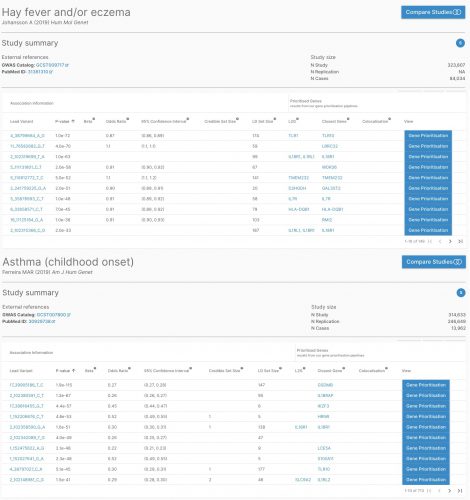Even the most recent attempt by Open Targets integrating basically everything
GWAS Catalog and UK Biobank) with transcriptomic, proteomic and epigenomic data, including systematic disease–disease and disease–molecular trait colocalization results across 92 cell types and tissues … trained a machine-learning model … to distinguish causal genes from neighboring genes, outperforming a naive distance-based model
ended up with nothing new
I am glad to see, however, that my criticism of the ORMDL3 hype has been taken up by other authors as well
In the first report of the association of the 17q21 locus with asthma, Moffatt et al. suggested ORMDL3 as a promising candidate on the basis of gene expression studies in EBV-transformed lymphoblastoid cell lines 5. However, the function of ORMDL3 remains to be fully elucidated and it is possible that other genes in this region, or more distant genes, contain the true causal variants.
while ORMDL3 isn’t appearing at all in the above analysis. So ORMDL3 seems to suffer the same fate as FcER1b/MS4A2 identified by the same group.
